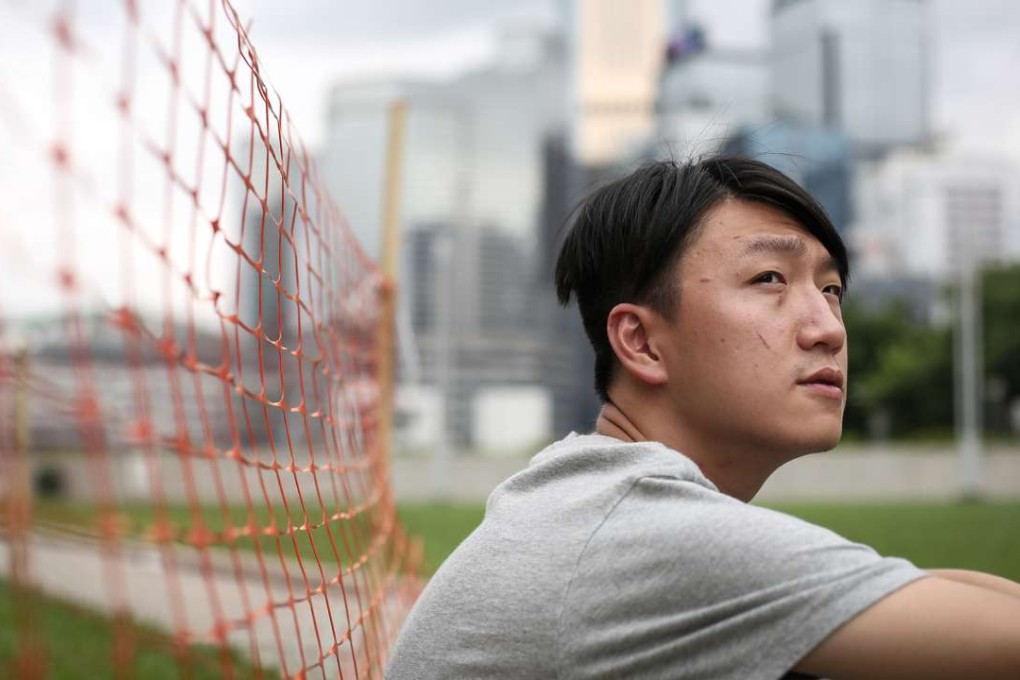Why Beijing’s headache over calls for Hong Kong’s independence has only just begun
‘Localism’ movement leaders like Edward Leung are willing to stake everything on their vision of Hong Kong’s independence from China, which others believe is a non-starter

By Day 65, even the most fervent followers of the Occupy protests of Hong Kong knew defeat was nigh. But student leaders had called on protesters to besiege the government headquarters in Admiralty in one last push. So on that autumn evening of November 30, 2014, having donned helmets and protective gear, undergraduate Edward Leung Tin-kei and more than a dozen classmates rallied thousands to march to the government compound.
As expected, clashes broke out between protesters and police, including members of the Special Tactical Squad in riot gear. The skirmishes continued overnight in a chaotic dance as the protesters advanced, only to be dispersed and diverted, and then onward again. “Some of my classmates were arrested. Others were struck by batons on the head and had blood all over their faces,” Leung said. “I burst into tears when I saw the bloodshed and will never forget those few moments.”
WATCH: Localist groups differ on future status of the city
Leung was then 23, a philosophy undergraduate at Hong Kong University. That was the night he lost his innocence. He lost faith in the “one country, two systems” promise, believing that China was bent on overwhelming Hong Kong’s distinctiveness. “Since then, I began subscribing to the ideas of localism and separatism. We Hongkongers need to turn our backs on China if we want to safeguard our autonomy and dignity,” he said.
Pro-Beijing newspaper reporter allegedly involved in scuffle with Hong Kong localist Edward Leung
That fateful evening also marked a break from non-violent civil disobedience. “I thought if we continue to persevere with moral dogmatism to not retaliate, we would only be at the mercy of others and it would not create any pressure on the government.”
WATCH: How Hong Kong’s Occupy movement began
The Occupy protests had challenged Beijing’s ruling that only two or three pre-vetted candidates would be put up for the 2017 chief executive election. Nearly two years after Occupy, its dashed dreams have morphed into a more radical mission, appearing to take Hong Kong into new, and possibly dangerous, ground. The young are flirting with the idea of independence for Hong Kong, with some supporting violence as the only way to effect change. If Joshua Wong was the face of Occupy, Edward Leung is the poster boy of this nascent independence movement.

Last July, Leung joined Hong Kong Indigenous, one of the leading localist groups in the city. “Localism” is a novel term representing a desire for greater control over Hong Kong’s identity and destiny.
Since the Communist Party’s takeover of China in 1949, Hong Kong has seen itself as a haven from the upheavals on the mainland. In 1967, militant pro-communists sparked violence that killed 51 people, making many Hongkongers appreciate all the more the territory’s separation from the mainland.
But despite their antipathy toward Chinese communism, the majority of Hong Kong people born after the 1950s still identified with Chinese culture. Local politicians who rose to prominence in the 1980s and the 1990s, including those calling for a faster pace of democratisation in the city, felt pride in their Chinese identity. Veteran activists, such as late stalwart Szeto Wah and his protege Albert Ho Chun-yan, felt it was their duty to build a democratic China while fighting for democracy in Hong Kong.
